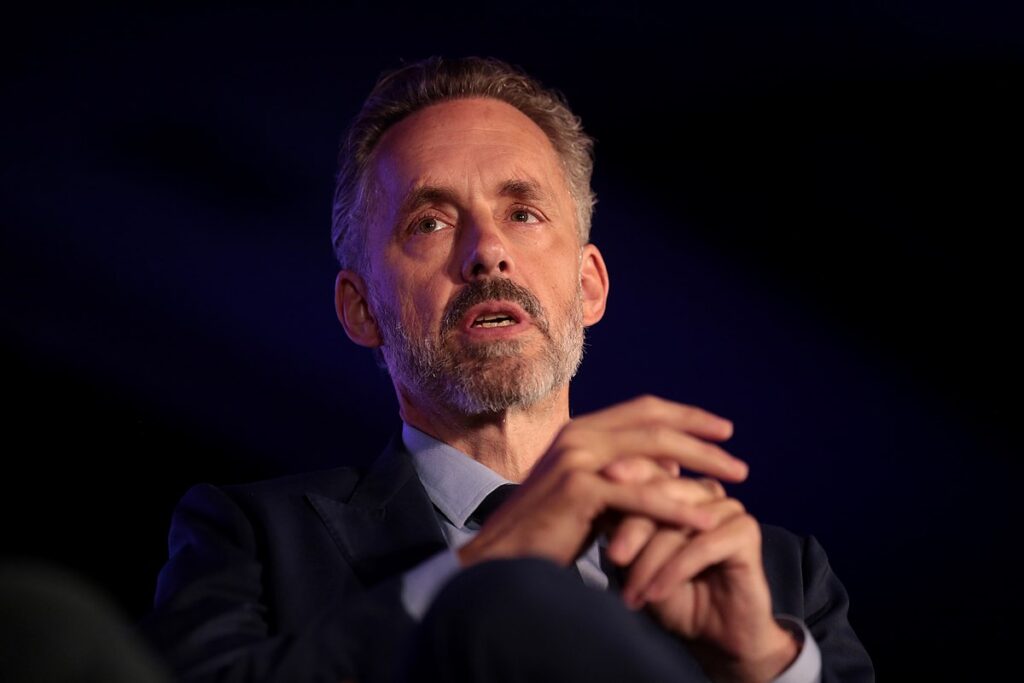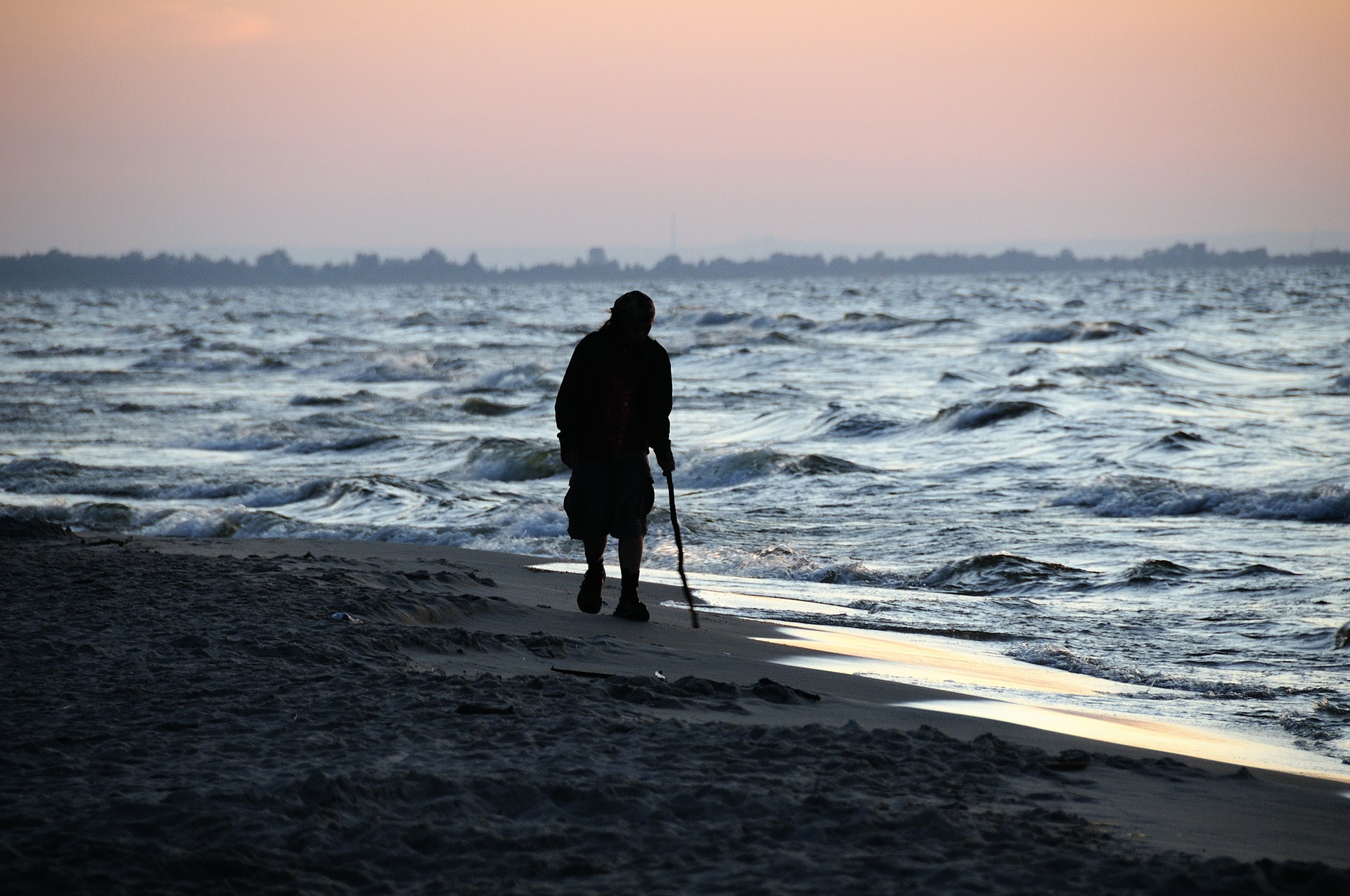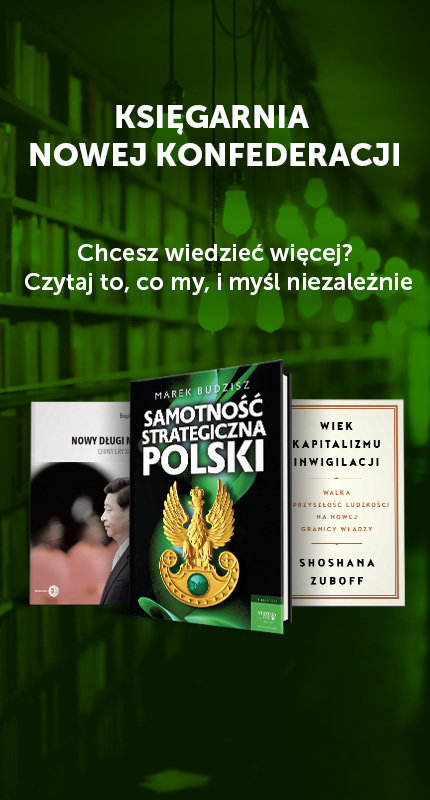
Nie masz czasu na zapoznanie się z całością artykułu?
Wystarczy, że klikniesz ikonę „oznacz artykuł do przeczytania później”. Wszystkie zapisane publikacje znajdziesz w profilu czytelnikaFrom small to big goals. Jordan Peterson’s new rules for life

(First published in Polish on 9th March 2021)
On the Amazon.com bestseller list, Jordan Peterson’s new book, “Beyond Order. 12 More Rules for Life”, is ranked at #9 seven days after its release. It’s not (yet?) at the top of the list, but it’s still quite a feat, as there are millions of titles on Amazon’s shelves. The Canadian’s book has also been awaited by millions – admirers and enemies on every continent. It seems no coincidence that several children’s books by Dr. Seuss, out of print for allegedly perpetuating racist stereotypes, were in Amazon’s top ten alongside Peterson’s latest work. “Beyond Order” also caused a sensation, even before its release – a group of Penguin Random House employees protested the publication, calling Peterson “an icon of hate speech, transphobia and white supremacy”. Management, however, decided not to follow these protests. For the past week, we have been able to enjoy (or worry about) the new work of the controversial, and probably – the most popular psychologist in the world.
His return, by the way, was in question – because for almost a year and a half Peterson was silent, crushed by a serious family and health crisis. From 2017 to mid-2019, he lived his life at a frenetic, almost inhuman pace, traveling from meeting to meeting, debate to debate, recording more and more podcasts and posting to social media on a regular basis. But in the last podcasts recorded in 2019, you can already hear the growing weakness and tension. First, the psychologist’s wife became seriously ill, and then the domino cubes fell. Peterson’s health collapsed completely under the sudden withdrawal of benzodiazepines – powerful, addictive anti-anxiety drugs taken over many years. In September 2019, his daughter and co-worker, Mikhaila, informed the public that her father was in detox, and then it only got worse: treatment in Canada, in Russia, again in the U.S., finally in Serbia, and the news became worse and worse. It was uncertain whether Peterson would ever return to public life.
Returning from chaos
And yet he did return. Though he has not yet fully recovered. In his first podcast of his own after emerging from the worst of the crisis, he talks with effort about the past several months. “I have learned some things during that trying time,” he says. As I waited for Jordan Peterson’s new book, I asked myself this very question in particular: what did the crisis teach him? Did it change anything in his perception of the world? Peterson has made a name for himself as a conservative author (though he calls himself a classical liberal). His worldwide popularity began with his struggle against new provisions of Canadian law (Bill C-16) designed to “combat discrimination based on gender identity and gender expression”, and in his previous book, the bestseller “12 Life Rules. An Antidote to Chaos”, among other things, Peterson talks about the biological underpinnings of traditional social hierarchies challenged by liberal-left circles. Thus, he was massively perceived as a defender of the “old order”.
The new book was to balance the message of the first one. To his credit, Peterson has long pointed out not only the problems of chaos and the benefits of order, but also that an excess of order leads to tyranny and oppression.
The symbol of his narrative has become the lobster – a crustacean living in hierarchies in which the strongest and highest-ranking individuals get the most, and the weaker ones lose their will to live. Peterson encouraged readers to look to the “victorious lobster” for inspiration, and to bring order to a chaotic reality – primarily through (literal and metaphorical) “standing straight,” taking responsibility, developing character, ambition, self-discipline, and sticking to the truth. With this message, Peterson has gained popularity primarily among young men with conservative views, looking for order and a stable point of support in the contemporary reality, which can be described in Zygmunt Bauman’s terms as “fluid”. The new book was to balance the message of the first one. To his credit, Peterson has long pointed out not only the problems of chaos and the benefits of order, but also that an excess of order leads to tyranny and oppression. Has Peterson actually come to question the “old order”? What did his encounter with chaos change?
Creative development
The short answer might be that it changed less than you might expect. “Beyond Order” is essentially a sequel to “12 Rules for Life”. The twelve sequential rules outlined in the psychologist’s new work were created long ago, as part of a longer list of 42 rules that emerged from a dialogue with users of the Quora website. Although most of “Beyond Order” was written in hospitals, the core of the book was developed long before the crisis the author went through. In fact, he writes in the introduction: ” I hope that I have managed to clarify some of the issues that were perhaps left less than optimally developed in my previous work”. “Beyond Order” can be read in this key. But in fact both of Peterson’s books are an expansion of the basic theses contained in the book that can probably be called his actual magnum opus – “Maps of Meaning”, published in 1999, long before the psychologist gained worldwide popularity.
“Maps of Meaning” is a difficult and extensive work. Aware of this, in subsequent books Peterson expounds his basic ideas in a simpler way. “Beyond Order” is such a lecture, because practically every chapter refers to the map of reality outlined earlier, and tells about various aspects of the hero’s journey
Peterson included there his comprehensive vision of man and the world in which the man operates. It is difficult to summarize a book that is 544 pages long, but I will try to describe this vision in the most simplistic terms. Man creatively explores the world, aiming at confrontation with the unknown, which inspires fear, and transform it into the familiar, the tame, the safe. On this path, the man discovers meaning in objects, people and events. This exploration is aided by stories and myths that have similar structure and content across cultures – depicting humans as heroes on a journey, suspended between the forces of chaos and order. Chaos is that, Peterson explains in “Beyond Order”, which surprises us and which we do not expect; it is “anomaly, novelty, unpredictability, transformation, shock.” The hero’s journey begins with the collapse of the existing order by the sudden appearance of an anomaly. The protagonist confronts the chaos, and as a consequence of this struggle, a new order – already slightly different from the previous one – is created. Peterson finds images of this basic map of the world in the works of his masters, such as Mircea Eliade and Carl Gustav Jung, as well as in the Bible and in Enuma Elish.
“Maps of Meaning” is a difficult and extensive work. Aware of this, in subsequent books Peterson expounds his basic ideas in a simpler way. “Beyond Order” is such a lecture, because practically every chapter, every rule refers to the map of reality outlined earlier, and tells about various aspects of the hero’s journey. First of all – about the conditions of a successful journey, and thus also of a good and fruitful life. These are basically the same conditions that I mentioned earlier, and that Peterson has been writing about since Maps of Meaning.
How to travel well
The first of these is sticking to the truth. Already in “12 Rules for Life,” Peterson included, among other things, the rule “Tell the truth, or at least don’t lie.” There he talks about the devastating effect of lying and any deviation from reality on the world and the liar himself. He talks about more or less the same thing, in different words, in several chapters of his new book. Rule #3 (“Don’t hide unwanted issues in the fog” tells the story from the point of view of marriage and close relationships that crumble under an avalanche of successive lies. The world is made up of small things, and an accumulation of small, hidden annoyances will someday explode – says Peterson, so despite our fears, we should confront and talk to our loved ones, admit our feelings, however difficult they may be. In Rule #5 (“Do not do things that you hate”), he illustrates the principle of sticking to the truth with examples from the workplace, telling his readers that if their superiors tell them to do things that are immoral, based on lies, or meaningless – they should object and, if necessary, leave. The entire mechanism for the persistence of falsehood and deception is described by Peterson in Chapter 9 (“Do not allow yourself to become resentful, deceitful or arrogant”), and the formation of commonly accepted lies at a much higher level of generality is described in the chapter on Rule #6 (“Abandon Ideology”).
Peterson talks about the necessity of choosing one clear goal (for immaturity, in his view, is keeping a large number of life options open endlessly, as Peter Pan wanted to do)
Other prerequisites for a hero’s journey well traveled include setting ambitious goals, working hard, self-discipline, and taking responsibility – something there is a lot about in “Beyond Order,” perhaps even more than in “12 Rules.” “Imagine what you could be and then aim single-mindedly at that” (Chapter 2), “Work as hard as you possibly can on at least one thing and see what happens” (Chapter 7), “Notice that opportunity lurks where responsibility has been abandoned” (Chapter 4) – in all of these chapters, Peterson talks about the necessity of choosing one clear goal (for immaturity, in his view, is keeping a large number of life options open endlessly, as Peter Pan wanted to do) and working hard and responsibly to pursue it. This is to lead us both to internal integration and to the fact that our work will make a difference for the better in our immediate environment – family, local community, and perhaps larger communities. Peterson has already made a name for himself (positively or negatively, depending on the views of the audience) in “12 Rules for Life” by stating that one should start with oneself, with “cleaning one’s own room”, and only then possibly deal with social reforms – and this thesis is also confirmed in “Beyond Order”. The protagonist confronting chaos must finally cling to positive values – beauty and goodness, which are ultimately supposed to generate optimism, despite life’s suffering and hardships.
Has Peterson changed?
The above discussion makes us revisit the question we asked earlier – what exactly is the difference between Jordan Peterson from “12 Rules for Life” and Peterson from “Beyond Order”, if one gets the impression that he is writing about the same thing? The new book devotes a bit more space to “creative exploration” that transforms the existing social order. Critics have accused Peterson primarily of committing the naturalistic fallacy (holding that because something is natural, rooted in biology, it is good and we should accept it). They pointed out that he does not question the unjust order of the world enough (the hierarchy à la lobsters, or the principle of “the winner takes it all”) and, moreover, recommends that the reader conform to that order.
Peterson warns that in order to rebel and transgress, one must first become a master of rules and dogmas, and learn, through self-restraint and self-discipline, to obey them
In “Beyond Order,” Peterson actually puts a bit more emphasis on the attitude of questioning bad order or transforming it, and on describing how too much order can turn into tyranny. Hierarchies must be creatively transformed for this reason. Peterson describes in detail what pitfalls await a conservative who comes to power, and I quote this description in large part because it is a striking warning to the coryphaei of the “conservative revolution” (Chantal Delsol’s term) that we see in Poland or Hungary: “Those who tend toward the right, politically, are staunch defenders of all that has worked in the past. And much of the time, they are correct in being so, because of the limited number of pathways that produce personal success, social harmony, and long-term stability. But sometimes they are wrong: first, because the present and the future differ from the past; second, because even once-functional hierarchies typically (inevitably?) fall prey to internal machinations in a manner that produces their downfall. Those who rise to the top can do so through manipulation and the exercise of unjust power, acting in a manner that works only for them, at least in the short term; but that kind of ascendance undermines the proper function of the hierarchy they are nominally part of. Such people generally fail to understand or do not care what function the organization they have made their host was designed to fulfill. They extract what they can from the riches that lie before them and leave a trail of wreckage in their wake”.
Certainly, the Peterson of today attaches more importance to interpersonal relationships, especially in the family, to the social construction of reality, to the need to consider other people and their contribution to the “hero’s journey”. So he is a little less individualistic
Speaking of the necessity of opposing the broken order, Peterson, however, warns that in order to rebel and transgress, one must first become a master of rules and dogmas, and learn, through self-restraint and self-discipline, to obey them. For these rules were created in a long process of negotiation between different people and groups, and in fact they keep society as such in order. Therefore, Peterson argues, one should not be in a hurry to question them. For everyone would like to shout “Down with the rules,” but the slogan “Down with responsibility” somehow does not appear on the banners.
There are still a few differences between the Peterson of “12 Rules” and the one of “Out of Order.” Certainly, the the Peterson of today attaches more importance to interpersonal relationships, especially in the family, to the social construction of reality, to the need to consider other people and their contribution to the “hero’s journey”. So he is a little less individualistic. He also appreciates the power of art, including transgressive art, which is inconvenient for conservatives attached to the classical canon of “niceness”. While he understands those who find abstract or shocking art irritating, he says, “It is easy to make the opposite error, as well: that art should be pretty and easily appreciated, without work or challenge: it should be decorative; it should match the living-room furniture. But art is not decoration. That is the attitude of a naive beginner, or of someone who will not let their terror of art allow them to progress and learn”. He also praises the Surrealists or William Blake – admittedly, in comparison with today’s critical art creators or even Piero Manzoni, these artists seem too classical, but for many traditionalists they are a thorn in the flesh and constitute a disturbing example of breaking with the canons.
A manifesto of insistence and struggle
There are several excellent and innovative fragments in “Beyond Order”. The description of the mechanism of the formation of dangerous ideologies (Rule 6) is very valuable. It begins with reductionism and the selection of a few generalized phenomena such as “economy,” “nation,” or “patriarchy.” The ideologue then creates a theory in which he explains very complex phenomena with the help of these abstractions, without bothering to carefully examine all possible factors. This arouses interest – understandable in a way, for who does not value simple explanations? The popularity of the theory brings crowds of followers and intellectually weaker successors who want to warm themselves in the warmth of the “master” – and then situations arise in which opponents of the ideology are cast aside from the margins of “good company.” This is how cancel culture is created, both on the left and on the right.
The popularity of the theory brings crowds of followers and intellectually weaker successors who want to warm themselves in the warmth of the “master” – and then situations arise in which opponents of the ideology are cast aside from the margins of “good company.” This is how cancel culture is created
In an era of growing polarization, the reflections in various chapters on the complementarity of conservatives and liberals are also extremely valuable. In post-political times, opponents are eager to eliminate each other – listening to the dithyrambs of politicians and their zealous followers, one might get the impression that the enemy (“leftist,” “lib” or “rightist”) should disappear from the face of the earth, and then eternal happiness will reign. However, this is faulty thinking: ” Conservatives are necessary for maintaining things the way they are when everything is working and change might be dangerous. Liberals, by contrast, are necessary for changing things when they are no longer working. It is no easy task, however, to determine when something needs to be preserved or when it needs to be transformed”. Both the left and the right are necessary, because each of these groups sees one half of reality and is blind to the other half. Peterson argues that perhaps it is good if in successive terms of office one group governs the other, because in this way both halves of reality can be taken into account (unfortunately, looking at how – for example in Polish practice – successive groups ruin the achievements of their predecessors, one can say that he is too optimistic).
You have to know when to push and fight, and when to let go for the health of yourself and others – and “Beyond Order,” however, is first and foremost one big manifesto of pushing (mostly on yourself) and fighting
On the other hand, Peterson’s constant emphasis on the individual’s personal responsibility and ambition raises doubts. The author repeats the encouragement to set difficult challenges and goals for oneself, urges readers to come to work early and leave later (it must be said, he adds, “not at the cost of one’s life”), to work murderously and with discipline. This in itself is valuable, but in excess it can also be dangerous, when huge goals (also influenced by a confluence of dramatic events) turn out to be unattainable in the form and timing one had dreamed of. Yes, one should shoulder the responsibility, but also keep in mind that in the pursuit of ambitions and a bright vision of a heroic life one can also take on too much and collapse under the burden. Especially since similar (though obviously not the same) arguments are used by the heads of large companies, squeezing their employees like a lemon in the name of greater results and productivity. Of course, Peterson is talking about the pursuit of what makes sense, not what is expedient, but the mistake is not hard to make. You have to know when to push and fight, and when to let go for the health of yourself and others – and “Beyond Order,” however, is first and foremost one big manifesto of pushing (mostly on yourself) and fighting.
Wisdom or trivialities?
Peterson also suggests to the reader (in Chapter 6) that it is best for him to assume that the problem is in himself and not in the system or the outside world-which, on the one hand, may be some way to avoid resentment and a victim attitude, but on the other hand, requires the suspension of another rule of the Canadian – namely, honesty with the facts. Sometimes in fact the problem is in the world and the system, not in me. Sometimes in fact the responsibilities and tasks I want to take on are too great. Without keeping this in mind, one can fall prey to large, technocratic private and state organisms eager to remake the individual in their own fashion.
While I agree with Peterson that we ought to start with small steps, I think we really shouldn’t rest on our laurels and limit yourself to cleaning our rooms. With all due respect to the latter activity
Peterson also makes a strong thesis that one cannot “fight patriarchy,” “eradicate oppression,” “reduce states,” or “save the environment,” because such statements are too much of a generalization. One must, he argues, give up ideology and start with smaller but more precisely defined problems. From this interesting statement, however, he moves on again to repeat the rule from his previous book, “Clean up your room” – and so we again revolve around changes on a personal level. I don’t believe that in today’s world of complex and entrenched systemic mechanisms, one can make a difference without also having these larger goals in mind. And while I agree with Peterson that we ought to start with small steps, I think we really shouldn’t rest on our laurels and limit ourselves to cleaning our rooms. With all due respect to the latter activity, both in its literal and metaphorical sense.
Peterson’s critics often accuse him of preaching clichés straight from self-development manuals. I disagree strongly – yes, the Canadian’s advice is not innovative, but it is also difficult to find radical innovations in the field of life wisdom. Certainly their selection is appropriate to the deficits of the modern world – a deficit of virtues, systematic work, reason, and honesty in facing the facts.
“Beyond Order” is an orderly work, encrusted with examples from Peterson’s own clinical practice and from literature – from “Harry Potter” through Dostoevsky’s “Devils” to the Gospels. At times it is very dynamic, at others it irritates with long-windedness, repetitions and concentration of pathos (similarly to “12 Rules For Life”). However, it is certainly worth getting acquainted with what Peterson presents after his return from the abyss – a bit changed, a bit softer, a bit broader outlook on reality. But the word “a bit” is right here, because this is basically the same Peterson as before – which can be both a big advantage and a big disadvantage of “Beyond Order” in the eyes of the readers.
Zobacz
The idea of “Solidarity” has been killed in Poland after 1989. Law and Justice fills this space only rhetorically
The tragedy of Poland is that it had to conform to the demands of the international Western community. It had to become aggressively capitalist and corporatist and it could not assert its independence. Jarema Piekutowski interviews Maurice Glasman
Khanna: Just because I'm a geopolitician by education, does not mean I'm an ideologue. Conectivity today is a battlefield for influence
Is Parag Khanna the second Fukuyama? Will we see a brutal race for the greatest possible connectedness? Or will conectivity bring peace, reduce the number of classic warfare? What will be the role of the West in this competition, and how much will the Belt and Road initiatives mean? Will nation-states fade away in favor of tribalism?
A Tale of Two Monsters and Four Elements: Variations of Carl Schmitt and the current global crisis
We have a class of scientific technocrats directing the work of a class of politicians without honour, who utterly subordinate everyone else. Only a spiritual revolution will save us now
India is, and will be a non-aligned power in the New Cold War
India is a non-aligned power; this move not only protects its own varied relations (as seen with India-Russia ties and even India-China bilateral) but also allows it to provide guidance and support to smaller economies in Asia and the Indo-Pacific
The Sino-Russian relationship should not be seen as an alliance of revisionist powers
Chinese do not feel comfortable with the seemingly endless “endism” produced by Western intellectual elites, be it Fukuyamanian “end of history” at the end of the Cold War, or the recent variant of the “end” of the so-called liberal international order (LIO)























